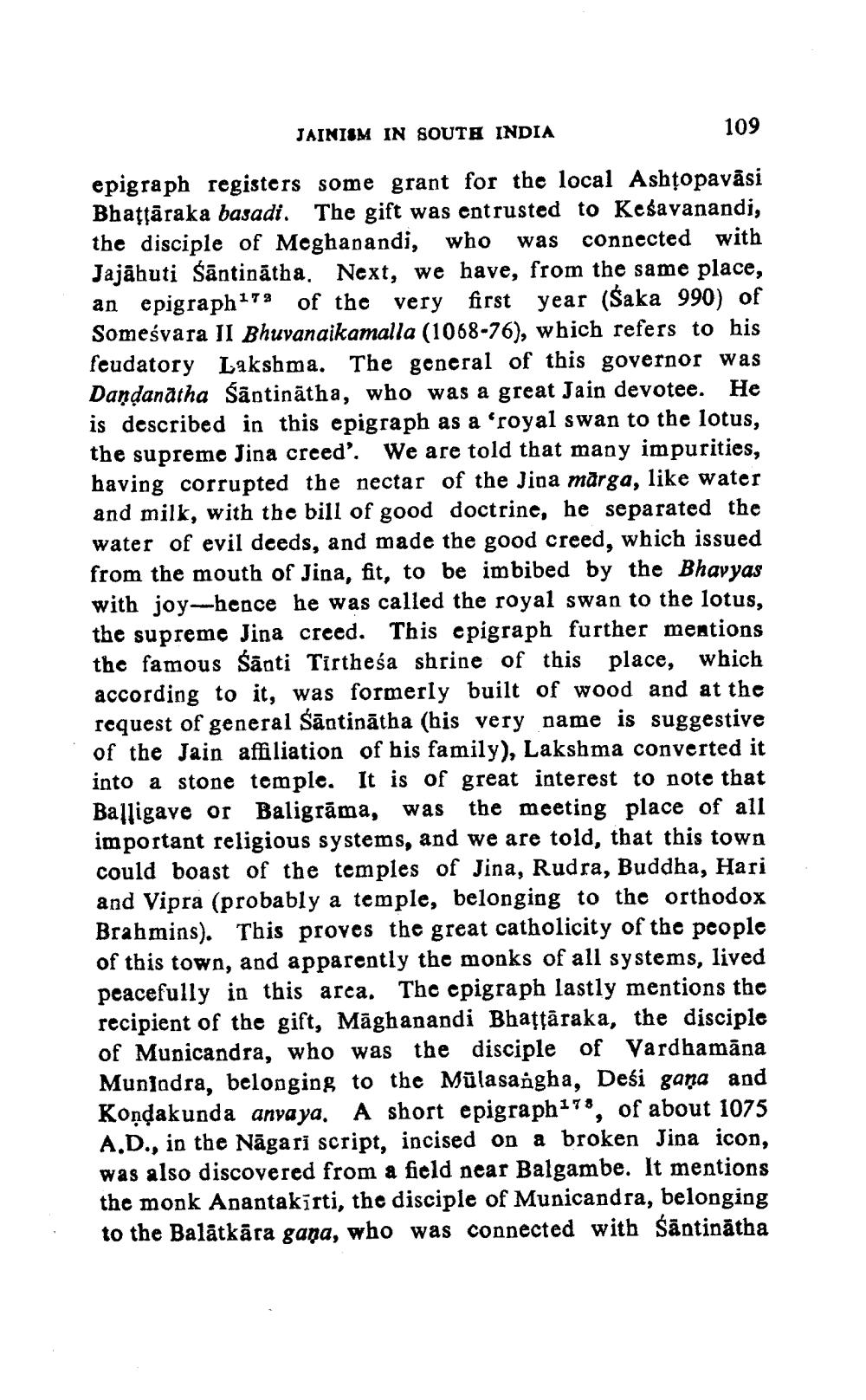________________
JAINISM IN SOUTE INDIA
109
epigraph registers some grant for the local Ashtopaväsi Bhațjāraka basadi. The gift was entrusted to Kesavanandi, the disciple of Meghapandi, who was connected with Jajābuti śāntinātha. Next, we have, from the same place, an epigraph17% of the very first year (Saka 990) of Someśvara II Bhuvanaikamalla (1068-76), which refers to his feudatory Lakshma. The general of this governor was Dandanātha śāntinātha, who was a great Jain devotee. He is described in this epigraph as a 'royal swan to the lotus, the supreme Jina creed'. We are told that many impurities, having corrupted the nectar of the Jina märga, like water and milk, with the bill of good doctrine, he separated the water of evil deeds, and made the good creed, which issued from the mouth of Jina, fit, to be imbibed by the Bhavyas with joyhence he was called the royal swan to the lotus. the supreme Jina creed. This epigraph further mentions the famous śānti Tirtheśa shrine of this place, which according to it, was formerly built of wood and at the request of general Sāntinātha (his very name is suggestive of the Jain affiliation of his family), Lakshma converted it into a stone temple. It is of great interest to note that Balligave or Baligrāma, was the meeting place of all important religious systems, and we are told, that this town could boast of the temples of Jina, Rudra, Buddha, Hari and Vipra (probably a temple, belonging to the orthodox Brahmins). This proves the great catholicity of the people of this town, and apparently the monks of all systems, lived peacefully in this area. The epigraph lastly mentions the recipient of the gift, Māghanandi Bhajțāraka, the disciple of Municandra, who was the disciple of Vardhamāna Muplodra, belonging to the Mülasangha, Desi gana and Konďakunda anvaya. A short epigraph178, of about 1075 A.D., in the Nāgari script, incised on a broken Jina icon, was also discovered from a field near Balgambe. It mentions the monk Anantakīrti, the disciple of Municandra, belonging to the Balātkāra gaña, who was connected with śāntinātha




